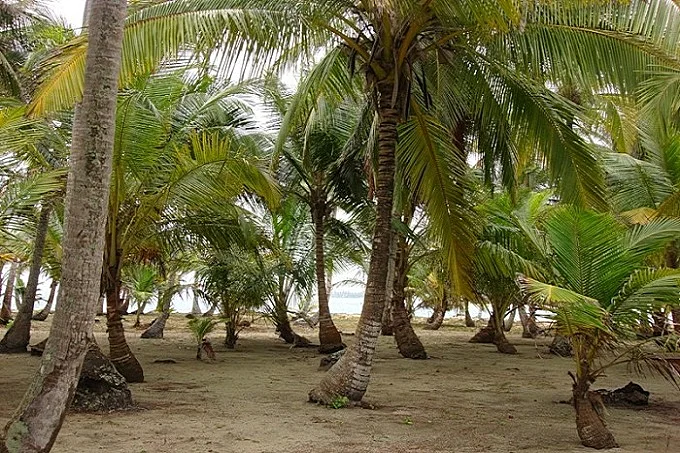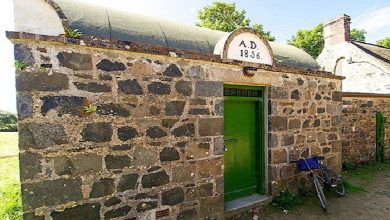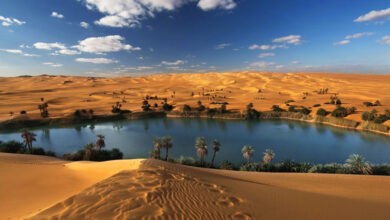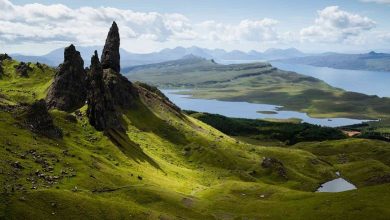Where is Treasure Island from Stephenson’s novel located on the map

Treasure Island, set in the 1880s by Robert Stevenson, is believed to be real. It is believed that the prototype of the novel unfolded was the real Isla del Coco.
Adored by more than one generation of boys, “Treasure Island”, which in the distant 1880s was given to the world by the writer Robert Stevenson, turns out to exist in reality. It is believed that the real island of Cocos (Spanish Isla del Coco) became the prototype of the uninhabited piece of land, where the exciting events of the novel took place. According to history, it was also imagined by Daniel Defoe, inventing his story about Robinson. And for Jurassic Park writer Michael Crichton, Coconut Island became the prototype for Dinosaur Misty Island in a film masterfully directed by Spielberg.
Impregnable on the outside, delightful on the inside
The island is located in the waters of the Pacific Ocean – in Costa Rica (Central America). From the capital of this country to get there by cross-country: first, you need to drive a jeep to the port town of Puntarenas, and then – to go about 40 hours by sea on a diving boat.
Cocos Island is nine square miles in size, just the visible tip of a line of submerged volcanoes rising above the ocean floor. This piece of land, which has become the prototype for literary desert islands, is very picturesque and relatively small, but unapproachable. The shores are high rocky walls with grottos and arches, and there are only two bays (with beaches, by the way) to which ships can dock.
But once you get to the island itself, you realize that the long and arduous journey was worth it. This place is truly paradise: tropical jungle, beautiful high waterfalls, originating in the mountain rain lakes, birdsong, the soft rustle of the waves.

Another attraction that makes the island look even more appealing is the abundance of coconut palms that made the island get its name. In general, Robinson Crusoe would definitely not starve to death here.
And there are three species of birds, and two species of fish and reptiles, which are not found anywhere else in the world. In total, there are more than 200 species of plants and fish, 400 – insects, 100 species of birds. And in the ocean are found whales, dolphins, and sea lions that come ashore and find shelter under the shade of broad leaves.
Treasures may indeed be buried here
Since ancient times, Cocos Island has been called a pirate island: according to many stories, it often hid the treasures of sea robbers. Therefore, Cocos has always attracted treasure hunters. If you believe the rumors, the island of paradise has buried treasure worth at least a billion dollars.
There is a famous story of one captain, who was so fanatical about getting the hidden treasures, that in 1889 he even founded an agricultural colony on Cocos and dug almost the entire available surface of the island. Alas, however, he never found any treasure. The only “catch” was a few dozen Spanish coins.
When they took him off the island two decades later, he was almost exhausted to death but continued to believe that he would have found the treasure with a little more effort.

Underwater treasures are protected by law
However, in addition to, if not mythical, then at least not confirmed by facts untold riches, the island has real treasures. This is its unique underwater world, which is not found in any other part of the Earth.
Now untouched by civilization, “Treasure Island” is a huge marine reserve, which has received a more relevant name among the people – “Shark Island”. Three times the size of the mainland, this reserve, teeming with sharks, whales, turtles, and other marine life, is effectively a “Jurassic underwater park.”
One of the researchers recalled his immersion in the local waters like this: “I dived under a school of two hundred hammerhead sharks, inside a school of thousands of big-eyed Trevally, and even was surrounded by twenty mating green turtles. The spectacle described by him will truly impress not only the explorer of the ocean depths but also any diver.
However, swimming near the coast is highly discouraged. After all, 14 species of sharks live in the waters. Three of them, by the way, are endangered. The crystal clear waters here are protected by law. Recently announced measures to protect the island’s aquatic life extend the fishing ban around Cocos Island.
According to scientists, Cocos Island has one of the densest biomass in the tropical world. In coral reefs and caves, countless numbers of not just coins and trinkets are hidden, but treasures of nature – marine life. According to a 2009 study, the species inhabiting the area are threatened by nearby fishing vessels. Since the late 1990s, this area has been recognized as a UNESCO World Heritage Site.
Despite the fascinating and, importantly, real information about the rich underwater world of the island in Costa Rica, the topic of pirates and the jewelry allegedly hidden here captures the imagination of those who first learn about Coconut.





Great article! I’ve been obsessed with this island for almost a decade – crazy person wall full of notes, photos, and maps – and few articles capture all the most curious details about the place.